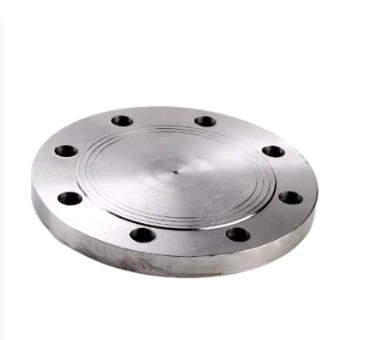-
Cangzhou Yulong Steel Co., Ltd.
-
Phone:
+86 13303177267 -
Email:
admin@ylsteelfittings.com
- English
- Arabic
- Italian
- Spanish
- Portuguese
- German
- kazakh
- Persian
- Greek
- French
- Russian
- Polish
- Thai
- Indonesian
- Vietnamese
- Zulu
- Korean
- Uzbek
- Hindi
- Serbian
- Malay
- Ukrainian
- Gujarati
- Haitian Creole
- hausa
- hawaiian
- Hebrew
- Miao
- Hungarian
- Icelandic
- igbo
- irish
- Japanese
- Javanese
- Kannada
- Khmer
- Rwandese
- Afrikaans
- Albanian
- Amharic
- Armenian
- Azerbaijani
- Basque
- Belarusian
- Bengali
- Bosnian
- Bulgarian
- Catalan
- Cebuano
- China
- China (Taiwan)
- Corsican
- Croatian
- Czech
- Danish
- Esperanto
- Estonian
- Finnish
- Frisian
- Galician
- Georgian
- Kurdish
- Kyrgyz
- Lao
- Latin
- Latvian
- Lithuanian
- Luxembourgish
- Macedonian
- Malgashi
- Malayalam
- Maltese
- Maori
- Marathi
- Mongolian
- Myanmar
- Nepali
- Norwegian
- Norwegian
- Occitan
- Pashto
- Dutch
- Punjabi
- Romanian
- Samoan
- Scottish Gaelic
- Sesotho
- Shona
- Sindhi
- Sinhala
- Slovak
- Slovenian
- Somali
- Sundanese
- Swahili
- Swedish
- Tagalog
- Tajik
- Tamil
- Tatar
- Telugu
- Turkish
- Turkmen
- Urdu
- Uighur
- Welsh
- Bantu
- Yiddish
- Yoruba

Dec . 05, 2024 01:39 Back to list
Understanding EN 1092 Flanges and Their Applications in Industrial Environments
Understanding EN 1092 Flanges A Comprehensive Overview
Flanges play a crucial role in various piping systems, acting as the connective tissue that holds together different segments of pipes and valves. Among the numerous standards governing flange specifications, EN 1092 stands out, particularly in the European context. Established by the European Committee for Standardization (CEN), EN 1092 is primarily focused on flanges made of metallic materials, defining their dimensions, mechanical properties, and testing requirements.
What is EN 1092?
EN 1092 is a European standard that specifies the requirements for flanges used in pressure applications. These flanges are widely utilized in industries such as oil and gas, water treatment, power generation, and chemical processing. The standard is particularly significant because it ensures interoperability and safety across various systems and components, providing a reliable foundation for engineers and manufacturers.
Types of EN 1092 Flanges
EN 1092 categorizes flanges into different types based on their design and intended use. The most commonly referenced types include
1. Type A Flanges (Flat Flanges) These flanges are flat and often used in applications where a seal is required against flat surfaces.
2. Type B Flanges (Raised Face Flanges) Featuring a slight elevation in the middle, these flanges provide a better sealing surface, especially when paired with gaskets.
3. Type C Flanges (Ring-Type Joint Flanges) These flanges are designed to accommodate metal ring gaskets, suitable for high-pressure applications.
en1092 flange

Each type of flange has specific dimensional requirements, which are critical for ensuring a proper fit and seal.
Material Specifications
Flanges as per EN 1092 can be made from various metallic materials, including carbon steel, stainless steel, and alloy steels. The choice of material is vital and is dictated by the operating conditions, such as temperature and pressure, as well as the corrosive nature of the transported media. The standard details the mechanical properties required for these materials, ensuring they can withstand the operational stresses they will encounter.
Dimensional Standards
EN 1092 places great emphasis on the dimensions of flanges, including outer diameter, thickness, bolt hole spacing, and the number of bolt holes. These specifications ensure that flanges can be seamlessly integrated into existing systems. Notably, the standard provides compatibility with other flange standards, such as ANSI/ASME, facilitating international trade and installation.
Testing and Quality Assurance
To ensure the reliability and safety of EN 1092 flanges, the standard prescribes several testing methods, including pressure tests and visual inspections. These tests are crucial for confirming that flanges can endure the operational stresses without failing. Adhering to this standard not only enhances safety but also improves the overall performance of the piping systems in which these flanges are employed.
Conclusion
EN 1092 flanges are essential components in many industrial applications, contributing to the safe and efficient transportation of fluids and gases. The standardization provided by EN 1092 enhances the interoperability of piping systems, ensuring that engineers can rely on uniform specifications across different manufacturers. As industries continue to evolve, adherence to such standards will be essential for maintaining safety, efficiency, and compatibility in complex piping systems. Understanding the intricacies of EN 1092 flanges is vital for engineers, manufacturers, and operators alike, ensuring they can make informed decisions regarding their piping needs.
Latest news
-
ANSI 150P SS304 SO FLANGE
NewsFeb.14,2025
-
ASTM A333GR6 STEEL PIPE
NewsJan.20,2025
-
ANSI B16.5 WELDING NECK FLANGE
NewsJan.15,2026
-
ANSI B16.5 SLIP-ON FLANGE
NewsApr.19,2024
-
SABS 1123 FLANGE
NewsJan.15,2025
-
DIN86044 PLATE FLANGE
NewsApr.19,2024
-
DIN2527 BLIND FLANGE
NewsApr.12,2024
-
JIS B2311 Butt-Welding Fittings LR/SR 45°/90° /180°Seamless/Weld
NewsApr.23,2024











